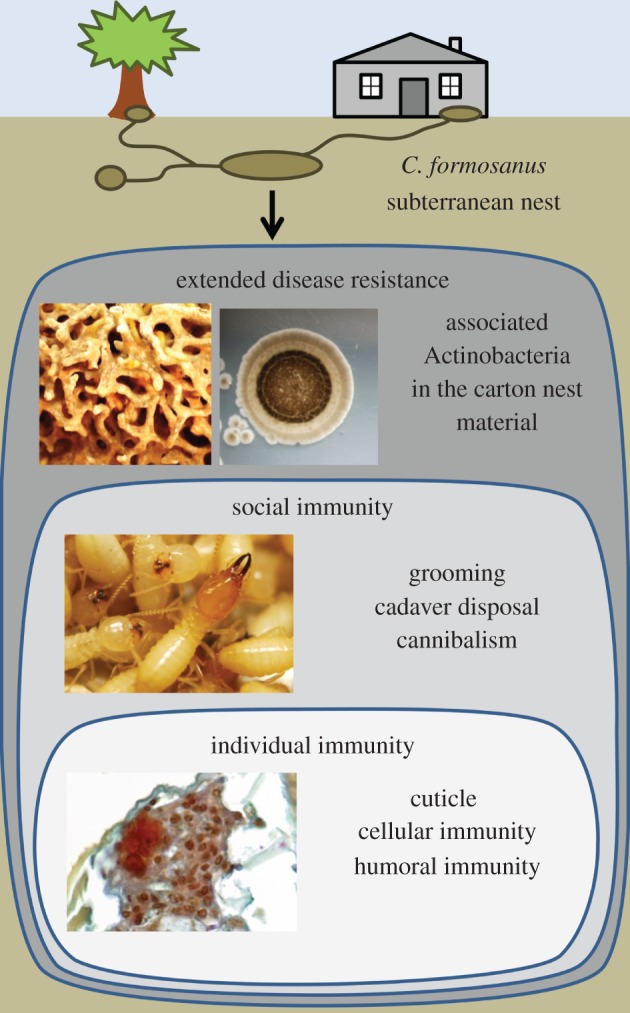Figure 4.

Different levels of immunity in C. formosanus. Each termite possesses an ‘individual immunity’ against pathogens with a physical defence (cuticle) and physiological defence (humoral and cellular immunity). As a group (superorganism), termite interactions, hygienic behaviours and secretions provide a ‘social immunity’. As a by-product of their building behaviour, the termite carton nest material and the faecal lining of the gallery walls provide a physical separation against surrounding soil entomopathogens, and also provide a niche to a community of beneficial Actinobacteria that reduces the chance for entomopathogens to invade the nest structure (extended disease resistance). (Online version in colour.)
